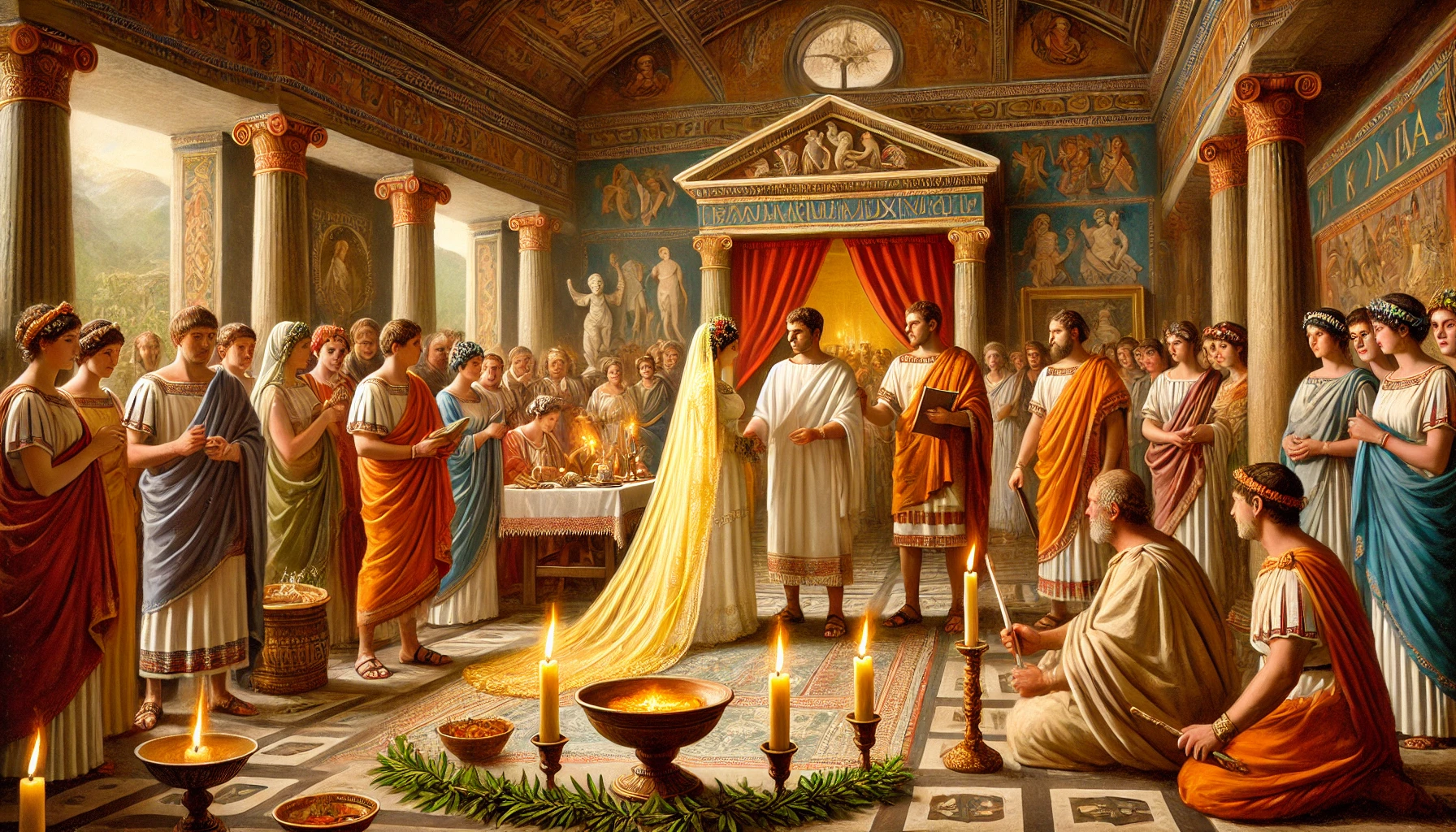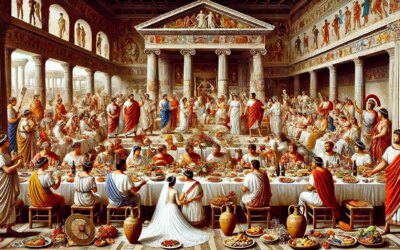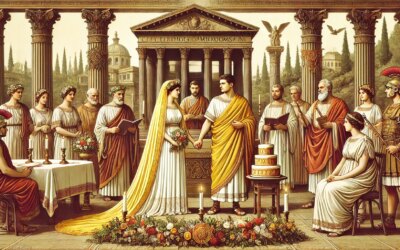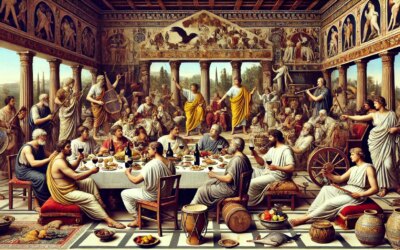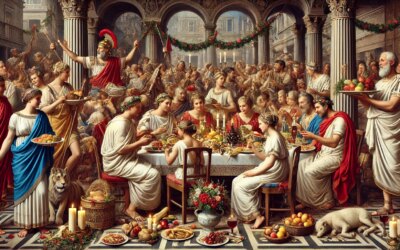More Than a Union: The Roman Marriage Ceremony
In the atrium of a Roman domus adorned with laurel wreaths and vibrant frescoes, a young couple stands before a priest. The bride, draped in a flowing saffron veil, clasps the groom’s hand as guests look on. This is a Roman wedding ceremony in the 1st century AD, a moment where love, family, religion, and state converge in a ritual of lasting importance.
Marriage in Roman Society
Marriage was one of the foundational institutions of Roman society. It was not only a personal choice but also a social contract, political alliance, and religious obligation. Among the elite, marriages often served strategic purposes—uniting families, consolidating power, or reinforcing status.
There were various forms of marriage in Rome, with the most traditional being confarreatio—a religious rite reserved for patricians—and coemptio and usus, more contractual in nature. By the 1st century AD, the manus form of marriage—where the wife passed under the legal control of the husband—was becoming less common, giving women more independence within matrimony.
The Engagement (Sponsalia)
Before the wedding came the sponsalia, a formal betrothal. It was sealed with a promise and often included the exchange of a betrothal ring worn on the third finger of the left hand, thought to be connected to the heart by the vena amoris.
The families agreed on dowry arrangements, and gifts were exchanged. Breaking off a betrothal could carry legal and financial consequences, particularly for the bride’s family.
The Wedding Day Rituals
Roman weddings typically took place on days deemed auspicious by religious authorities, avoiding the Kalends, Nones, and Ides of each month, as well as festivals for the dead like the Parentalia.
The bride wore a white tunic (tunica recta) girded with a “knot of Hercules”—a symbol of fertility. Over her head, she donned the saffron veil (flammeum) and orange-red shoes. Her hair was parted with a spear in the style of the Vestal Virgins.
The groom wore a toga and offered a sacrifice, often of a pig, to Jupiter or Juno. Friends and family gathered in the domus for the ceremony and ensuing banquet.
The Ceremony: Joining of Hands and Sacred Fire
The heart of the Roman wedding was the dextrae iunctio—the joining of right hands between bride and groom, symbolizing unity and mutual consent. A priest or family member officiated, invoking blessings from deities such as Juno (goddess of marriage), Hymen (god of weddings), and Venus (goddess of love).
A sacrifice was made, and sacred fire from the household hearth symbolized the bride’s transition from one familia to another. The couple shared a ceremonial cake of spelt (panis farreus), giving the confarreatio ceremony its name.
The Procession to the Groom’s House
After the ceremony, the bride was escorted in a grand procession to her new home. Torches lit the path, and flutes played while guests sang bawdy songs to ward off evil spirits and encourage fertility. The groom’s mother received the bride with fire and water—a symbolic welcome into the household gods’ domain.
The bride smeared wool on the doorposts and was carried over the threshold to avoid ill omens. She was then shown to the marriage bed (lectus genialis), marking the consummation of the union.
The Wedding Feast and Celebrations
A lavish banquet followed the rites, featuring delicacies, toasts, and entertainment. Guests brought symbolic gifts: spinning tools, mirrors, and fertility charms. The feast served as both celebration and public affirmation of the new union.
Depending on the family’s wealth and status, the banquet could rival imperial banquets, complete with musicians, dancers, and theatrical performances.
Marriage Laws and Legal Implications
Roman law distinguished between matrimonium iustum (legal marriage) and informal unions. Only legal marriages granted rights of inheritance, citizenship for children, and social legitimacy. Marriages could be dissolved, but divorce—while accepted—was often stigmatized, especially for women.
The Augustan marriage laws (Lex Julia and Lex Papia Poppaea) encouraged marriage and childbearing by offering incentives to citizens who married and penalizing those who remained single. The laws also restricted marriages across certain class lines, reinforcing social boundaries.
The Role of Women and the Dowry
Women brought a dowry (dos) into marriage—property or wealth to support the household. However, women retained legal control over their own property unless the marriage was in manu. Over time, Roman matrons gained increasing autonomy, managing estates and influencing politics from behind the scenes.
The ideal Roman wife was modest, loyal, and fertile—but many historical figures, from Livia Drusilla to Julia Domna, shaped imperial policy from within the household.
Legacy of Roman Weddings
Roman wedding customs influenced later European and Christian traditions. The veil, ring, procession, and feast remain core elements of modern weddings. Roman ideas of marital consent, dowry, and ceremonial structure laid the groundwork for centuries of matrimonial law and ritual.
In Union, Civilization
The Roman wedding was more than personal joy—it was a declaration of civic responsibility and cultural identity. Through sacred rites, vows, and shared bread, two citizens affirmed their place in the great fabric of Rome. In every joined hand and flaring veil, the future of the empire flickered into being—one couple at a time.

